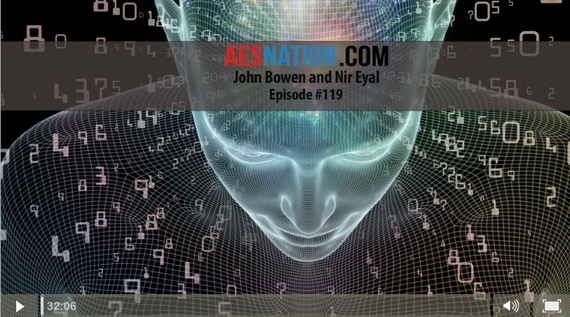As entrepreneurs, there's nothing more frustrating than offering a product or service that we know is great but that people for some reason don't want to buy. Wouldn't it be great if we could systematically get lots of attention from consumers and keep them coming back for more?
The fact is, you can have the best offering of all your competitors and still not gain enough traction in the marketplace. The solution is to tap into consumer psychology and create an addictive product or service that customer simply can't resist.
That's exactly what Nir Eyal is all about. The co-founder of two successful start-ups, Eyal now consults on the intersection of psychology, technology, and business. He is the author of Hooked: How to Build Habit-Forming Products.
According to Eyal, you must have four key elements in place to make your product or service practically irresistible to prospects -- and to keep your existing customers coming back for more.

1. Triggers. Triggers are pieces of information or directives that tell us what to do next. They are often external -- an image on our screen telling us to "click here" or an order form in the mail with purchasing instructions.
But it's the internal triggers that are most powerful at forming long-term behavioral habits among consumers. Internal triggers prompt us to take action using information already in our own brains. Examples of internal triggers are memories, associations with certain places, routines, situations, people and, most frequently, emotions. The most powerful emotional triggers are negative emotions -- boredom, fear, uncertainty. When we feel these negative emotions, we look for anything that provides relief from them, and we turn to those outlets with little or no conscious thought.
This has powerful implications for you as an entrepreneur. If your company can be the top-of-mind solution to ease your customer's pain point, you win. By engaging and addressing their emotional triggers, you'll attract more customers and keep them for life. "Monetization is a result of engagement. We don't have to constantly worry about sell, sell, sell," says Eyal. "What we should worry about is how to provide enough value consistently for people to come back all the time."
2. Action. Action is the simplest behavior you can take in anticipation of a reward. The easier you can make it for your customer to get relief -- to scratch that psychological itch of fear, uncertainty or boredom -- the more addictive your product or service will be. Says Eyal: "Just think of some of the most habit-forming products out there and how simple they are. Scrolling on Pinterest. Searching on Google. Pushing the play button on YouTube."
Our job as entrepreneurs is to figure out how to provide relief in the easiest way possible. Think about that the next time you lament that customers aren't filling out the forms you send them or taking the desired steps. The fact that they're not doing what you want them to do is probably your fault, not theirs. You haven't designed the experience to be easy enough. "This is part of our responsibility as designers of experiences. If the user, the customer, is not doing the intended behavior, we as entrepreneurs have to take it upon ourselves to ask what is in their way and how we can remove it for them," he says.
3. Variable reward. Obviously a reward is the relief that customers get by taking an action -- their itch is finally scratched. And the most habit-forming products and services tend to feature variable rewards. As the psychologist B.F Skinner showed with his famous mice boxes back in the 1950s, rewards that are given out on a variable schedule are valued more than consistently given rewards.
This pattern also holds true with many consumers, who tend to be more captivated and engaged by things that have elements of inconsistency to them. Think about how many times you repeatedly check your email or log onto facebook during the day, for example. It's the possibility of a reward that keeps us coming back. So if your business caters to customers looking to be excited or entertained in some way, adding a little variability to the experience will keep customers guessing and surprised -- and scratch their itch while leaving them wanting more.
That said, Eyal points out that some customers want to mitigate uncertainty and reduce variability. In those cases, our job is to alleviate that uncertainty around a situation that is inherently variable by giving the user more agency and control.
4. Investment. This is the element entrepreneurs most often overlook. Investments load the next trigger. Keeping in touch with existing customers through emails or other methods doesn't necessarily lead to immediate sales, but it will encourage them to come see you again in the future. Investment also means more value for your offering.
This is seen most clearly in technology. Unlike a physical item that wears down the more we use it, habit-forming technology becomes more valuable with use. The more content you put in your iTunes library or the more data you add to Mint.com, the more valuable those resources becomes. The more followers you accrue on Twitter, the more valuable that network becomes.
Your reputation is also a part of the investment element. The better your reputation is -- both in the physical world and on review sites like Angie's List or Task Rabbit -- the more you can charge for your product or service and the more likely you will be chosen over your competitors.
Give yourself the tools you need to excel in your business and in your personal life. Check out the insights, tactics and actionable strategies from today's top entrepreneurs at AES Nation.